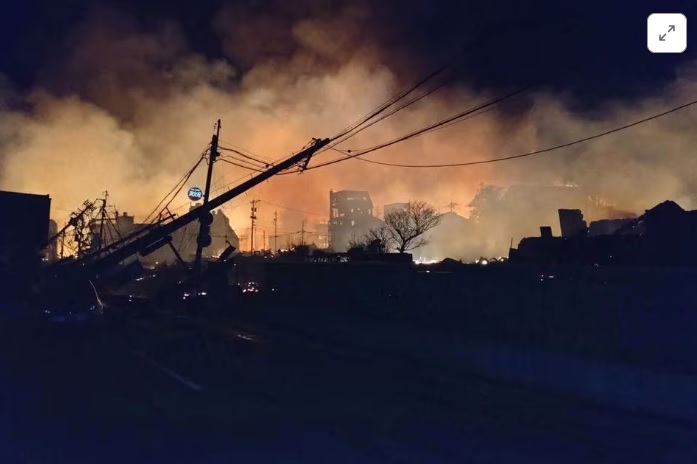TOKYO, Jan 1 (Reuters) – A formidable earthquake struck central Japan on Monday, claiming at least one life, causing widespread building destruction, disrupting power to tens of thousands of homes, and compelling residents in coastal areas to seek refuge at higher elevations.
The quake, with a preliminary magnitude of 7.6, generated waves approximately 1 meter high along Japan’s west coast and neighboring South Korea.
Initially issuing a major tsunami warning, the Japan Meteorological Agency (JMA) later downgraded it to an advisory after closely monitoring the situation. This event marked the strongest quake in the region in over four decades, according to the U.S. Geological Survey.
Houses crumbled, fires erupted, and military personnel were mobilized to aid in rescue operations, according to government spokesperson Yoshimasa Hayashi.
Tragically, an elderly man lost his life as a building collapsed in Shika Town in Ishikawa, reported broadcaster NTV, citing local police.
Media footage from the prefecture depicted a building collapsing in Suzu city, enveloping the area in dust, and a significant crack in a road in Wajima, where alarmed parents clutched their children.
On the social media platform X, a witness posted footage of the Keta Grand Shrine near the coast in Hakui swaying during the quake as a crowd of onlookers watched in fear. “It’s swaying,” she exclaimed. “This is scary!”
Millions of Japanese, traditionally visiting shrines and temples on Jan. 1 to mark the start of the new year, faced unsettling scenes. In Kanazawa, a popular tourist destination, images showed the remnants of a shattered stone gate strewn at the entrance of another shrine as anxious worshippers looked on.
The tremor also reverberated in the mountains of neighboring Nagano prefecture.
In response to the ongoing seismic activity, the Japanese government ordered over 97,000 people in nine prefectures on the western coast of Japan’s main island Honshu to evacuate. They were accommodated in sports halls and school gymnasiums, commonly used as emergency evacuation centers.
Kanazawa resident Ayako Daikai recounted evacuating to a nearby elementary school with her family after the earthquake. Classrooms, stairwells, hallways, and the gymnasium were all crowded with evacuees. “We haven’t decided when to return home yet,” she told Reuters during a telephone interview.


